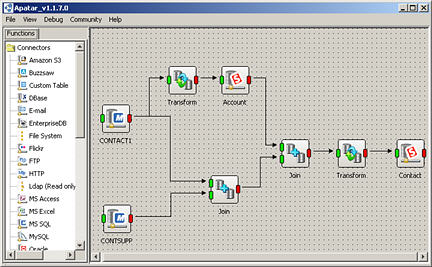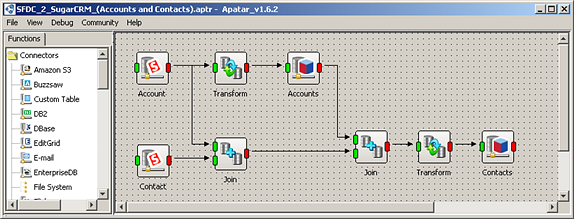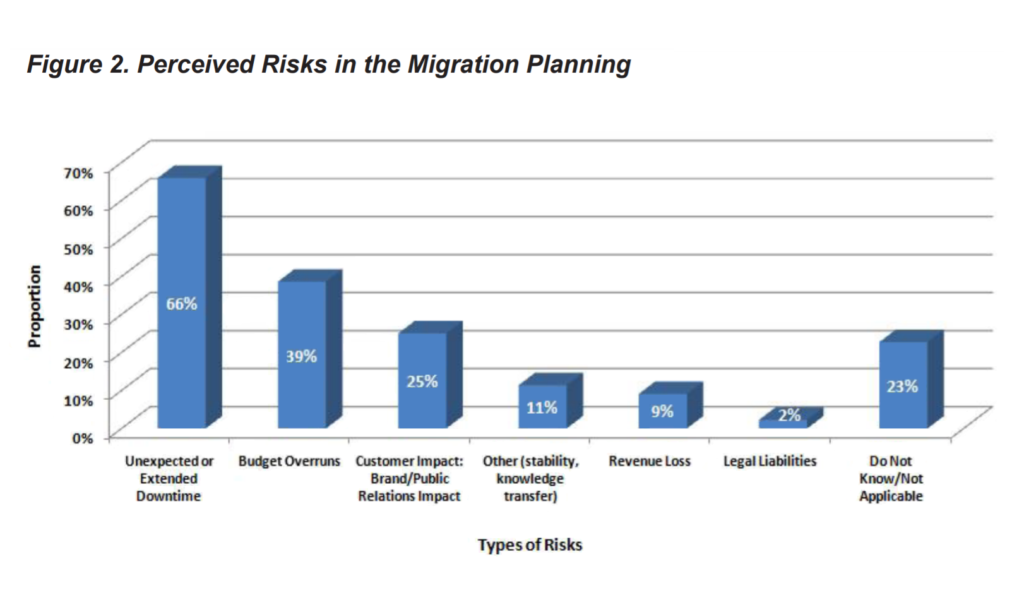What’s the Difference Between Data Conversion and Data Migration?

In brief
Data conversion is the transformation of data from one format to another. It implies extracting data from the source, transforming it, and loading to the target system based on a set of requirements.
Data migration is the process of transferring data between silos, formats, or systems. Therefore, data conversion is only the first step in this complicated process. Except for data conversion, data migration includes data profiling, data cleansing, data validation, and the ongoing data quality assurance in the target system.
Sometimes, both terms are used as synonymous by many web resources. I think the reason is that there are very few situations when a company has to convert data without actually migrating it. Still, if such a scenario exists at your company, let’s have a closer look at the challenges one may encounter.
 Migrating data from Salesforce.com to SugarCRM with Apatar
Migrating data from Salesforce.com to SugarCRM with Apatar
Possible issues with data conversion
There are some data conversion issues to consider when data is transferred between different systems. Operating systems have certain alignment requirements which will cause program exceptions if these requirements are not taken into consideration. Converting files to another format can be tricky as how you convert it depends on how the file was created. These are only few examples of possible conversion challenges.
Some of the ways to avoid data conversion problems are suggested by IBM in its documentation:
- 1. Always transform objects into printable character data types, including numeric data.
2. Devise an operating system–neutral format for an object transformed into a binary data type.
3. Include sufficient header information in the transformed data type so that the remainder of the encoded object can be correctly interpreted independent of the operating system.
Data conversion is often the most important part of data migration. You have to be very careful during this stage to assure data quality in your target system.
Data migration challenges
The problems associated with data migrations include:
- the limitations of the source and target systems,
- understanding what should be moved and how,
- the quality of data in your current environment,
- ongoing changes, etc.
A proper data migration plan can help you to address many of the obstacles in advance.
 Data migration risks (image credit: Hitachi)
Data migration risks (image credit: Hitachi)For more on the topic, check out our article titled “The Three Most Common Problems Faced During Data Migration.” Or, learn about the risks and challenges that both data migration and conversion face—from Gartner’s report issued in 2009. A data migration survey from Hitachi is also worth reading.
Further reading
- Top Data Integration Challenges: Meet DQ, CDI, EAI, DW, and BI
- Moving Apps to the Cloud: Solving Data Integration Issues
- The Three Most Common Problems Faced During Data Migration








